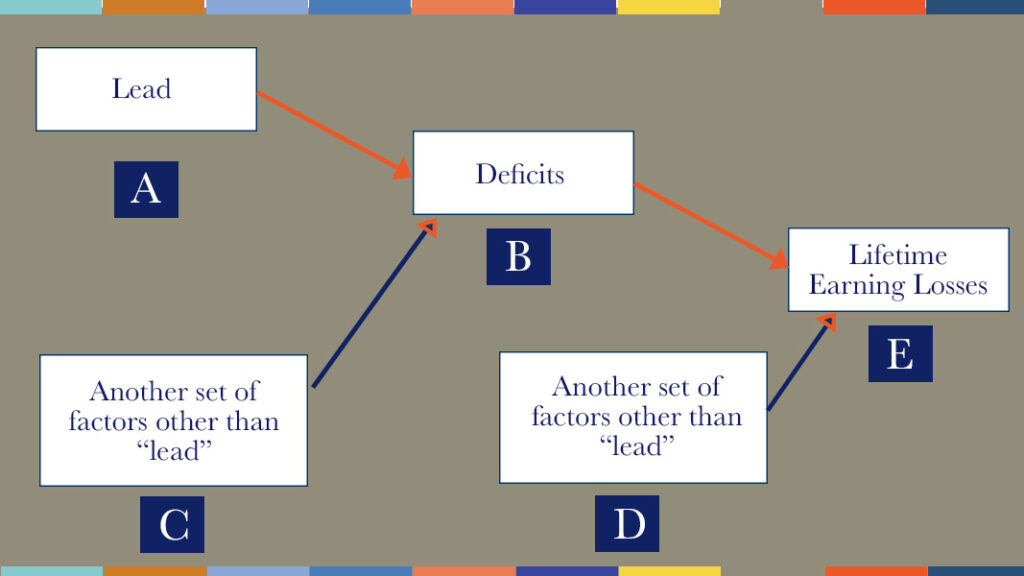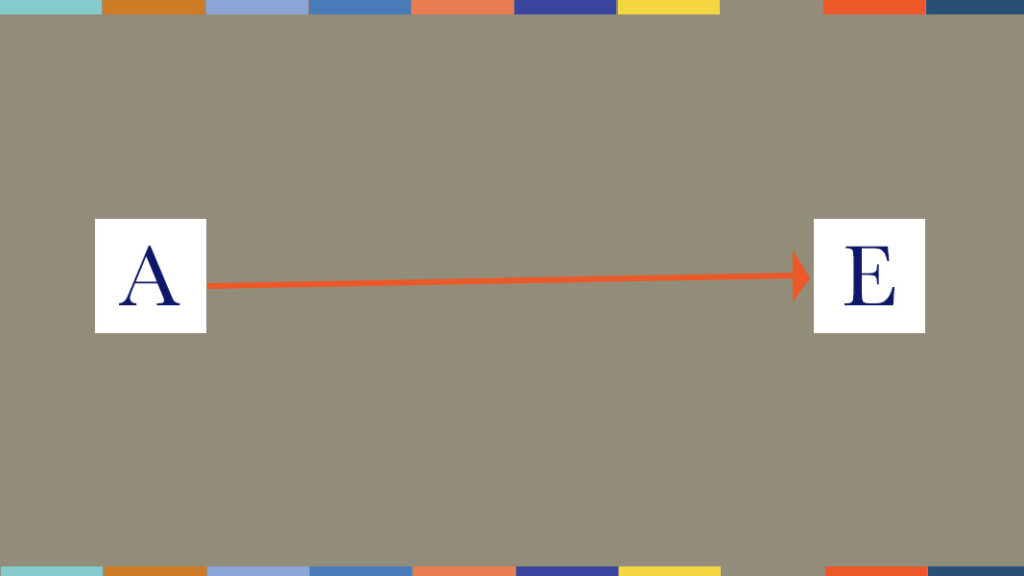Jerome S. Paige, Ph.D. & Subodh Mathur, Ph.D.
(info@paigeandassociates.com)
(www.paigeandassociates.com)
In lead paint exposure cases, it is essential that the plaintiff causally link Blood Lead Levels (BLL) to estimates of economic damages (earnings losses). In a recent Maryland case, we considered the causal link between BLLs and lifetime earnings and emphasized the importance of using standard econometric methodologies to draw conclusions.
For sure, high BLLs can be a source of a plaintiff’s “deficits.” The issue is to separate the BLL and non-lead causes of the deficits. To do this, economists use “structural causation models.”
A “structural causation” model* presents the entire flow of connections from an initial cause via significant intermediate steps to the final effect. (A, B, C, & D to E)
Here, the initial cause is high BLL, and the final result is reduced “lifetime earnings.”
One version of this model type† lays out the flow of causality from BLLs to IQ, IQ to wages, and
how wages affect earnings. It also shows how BLLs affect schooling and how schooling affects wages and earnings. Furthermore, it tests links between BLLs, schooling, labor market participation, and earnings. This study found that each additional 1 μg /dl BLL corresponds to a
0.25 IQ point loss per child, implying a loss of 2.39% in lifetime earnings for every IQ point loss.
However, in our lead cases, we find that economists often don’t use structural models. Instead,
they use “reduced form causation models,” which are “black boxes” that skip the causality flow
and directly link the final effect to the initial cause. In lead exposure cases, such a model assigns all the plaintiff’s deficits (E) to BLL (A) without considering non-lead factors that lead to the deficits.

The Use of Structural Models in Econometrics – American Economic Association (aeaweb.org)
† David S. Salkever. “Updated Estimates of Earnings Benefits from Reduced Exposure of Children to Environmental.” Lead Environmental Research 70, 1-6 (1995)

One example of such a factor is “low birth weight,” which can retard a child’s cognitive
development. Another relevant non-lead factor might be a child’s socioeconomic status. These
are all omitted in a reduced form model.
In short, the general principle is that economic analysis that relies on structural causation models is more appropriate than reduced form causation models when there is a cause-and-effect issue in estimating damages. So, make sure your economic expert uses the applicable approach or they support why they don’t.
This article has been reformatted and published for this blog. It originally appeared in the:

